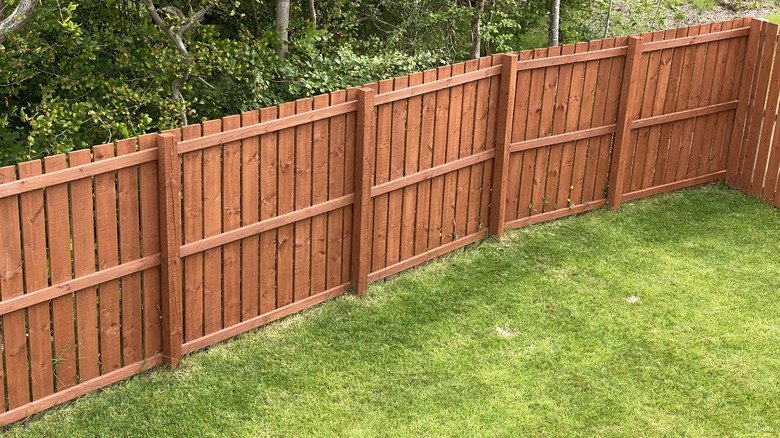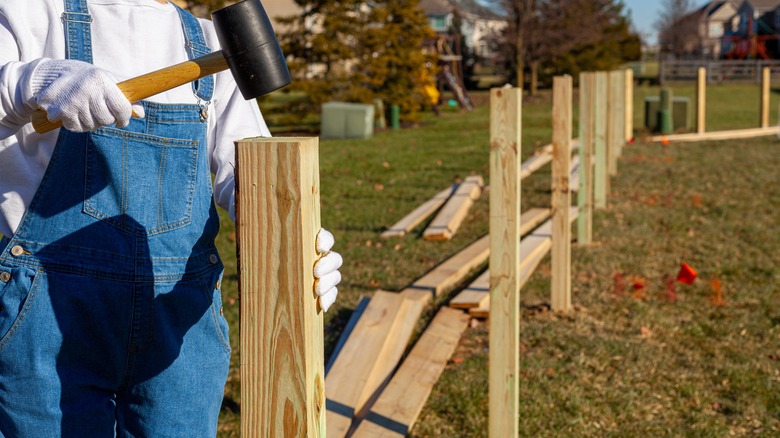Determine The Number Of Posts You Will Need To Build Your Fence With These Tips
Building a strong fence starts with proper calculations and the right number of posts, a crucial step that improves stability and aesthetics. There are plenty of helpful tips to determine how wide to make the gaps in your fence, but the general rule for post spacing is to space them 6 to 8 feet apart for most wooden fences. The specific distance will be modified based on height, material, and the area you're fencing. To determine how many posts you'll need, begin by measuring the length of your fence line in feet, divide by the post spacing, then add one to estimate the number of posts. You need the "extra" post because there are posts on each end. So if your fence line is 80 feet, and you've decided to post every 8 feet, you'll divide 80 by 8 then add one to end up with 11 posts.
Other factors might influence your count. Sloped yards, for example, require closer spacing to accommodate the gradual steps between panels. If you live in a particularly windy area, you may need to increase your pole count to add reinforcement. Gate openings also require extra posts, typically two per gate. Always take the time to mark each post location with stakes or spray paint before locking in a final count. You'd much rather have extra posts than not enough and risk sagging or collapse over time.
Fine-tuning your fence post calculations
Beyond basic spacing, how tall you want your fence can change the totals as well. Shorter fences have less wind resistance and sway less, for example, so they can get away with posts spaced farther apart. When determining the perfect depth for your fence posts, there is a simple rule of thumb to follow: It's usually about one-third of the post's height. For example, a standard 8-foot post buried 2 ⅔ feet deep leaves 5 ⅓ feet above ground. Now you know you'll be working with an approximately 5-foot to 5 ½-foot fence (since vertical fence boards can rise higher than posts). The ultimate height of the fence can help determine exact post distances.
Choosing the right material for your backyard fencing matters as well. Heavier posts like hardwood demand closer spacings than a lightweight chain-link. Use thicker posts on corners to handle added stress. It's always best to sketch out your fencing design and needs before going to the store, to avoid multiple trips. Also, double-check local building codes as some areas mandate specific spacings and depths when building fences. When building anything on your own, a little upfront planning goes a long way.

